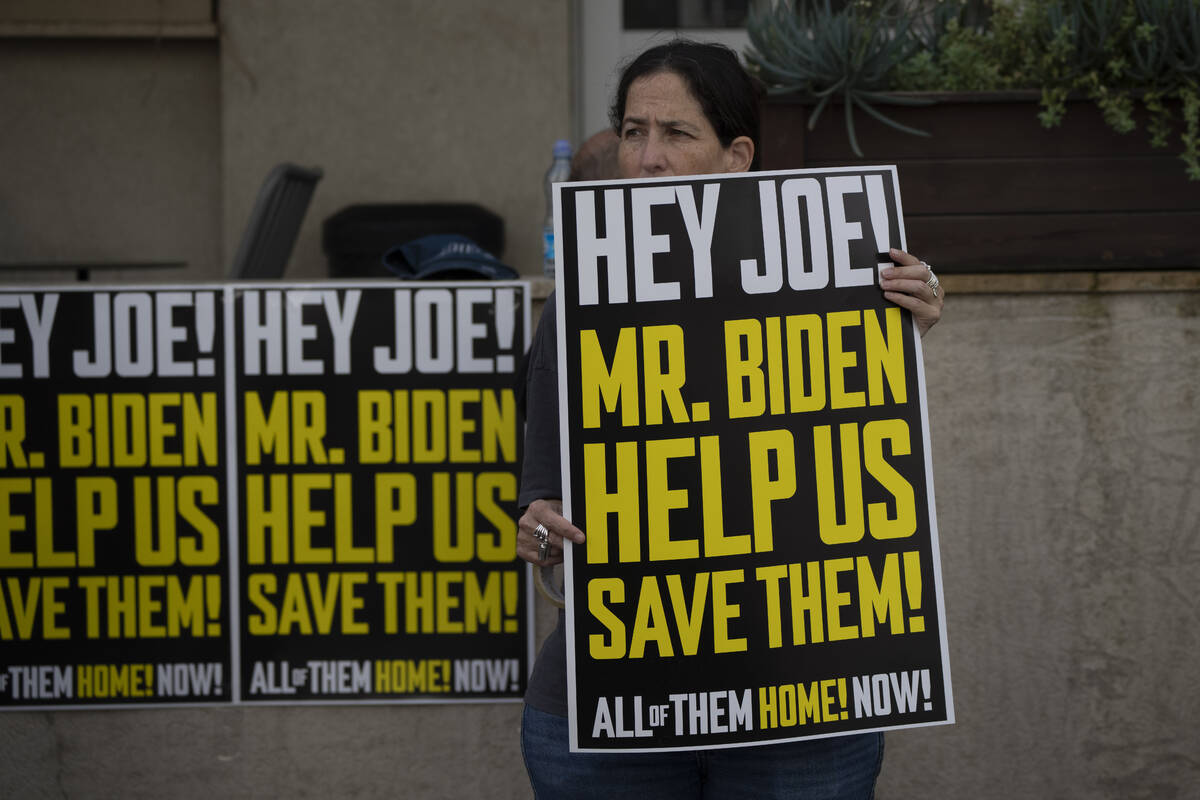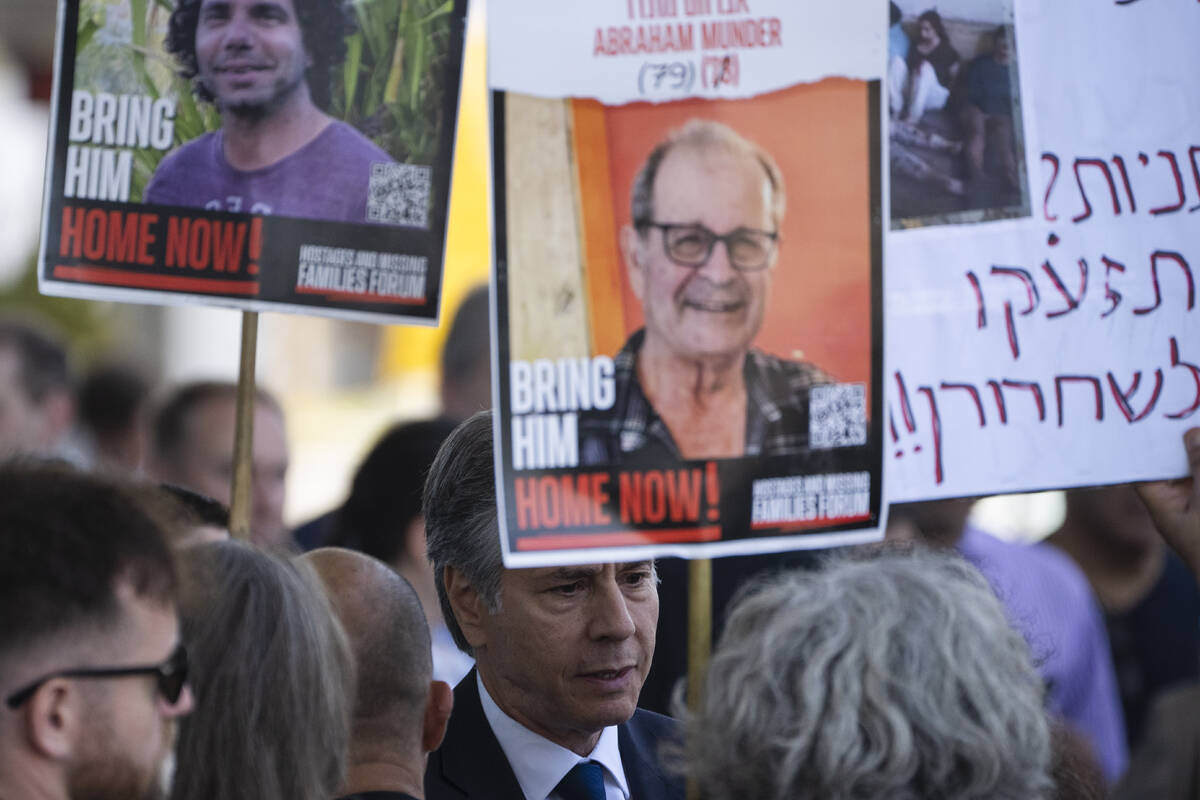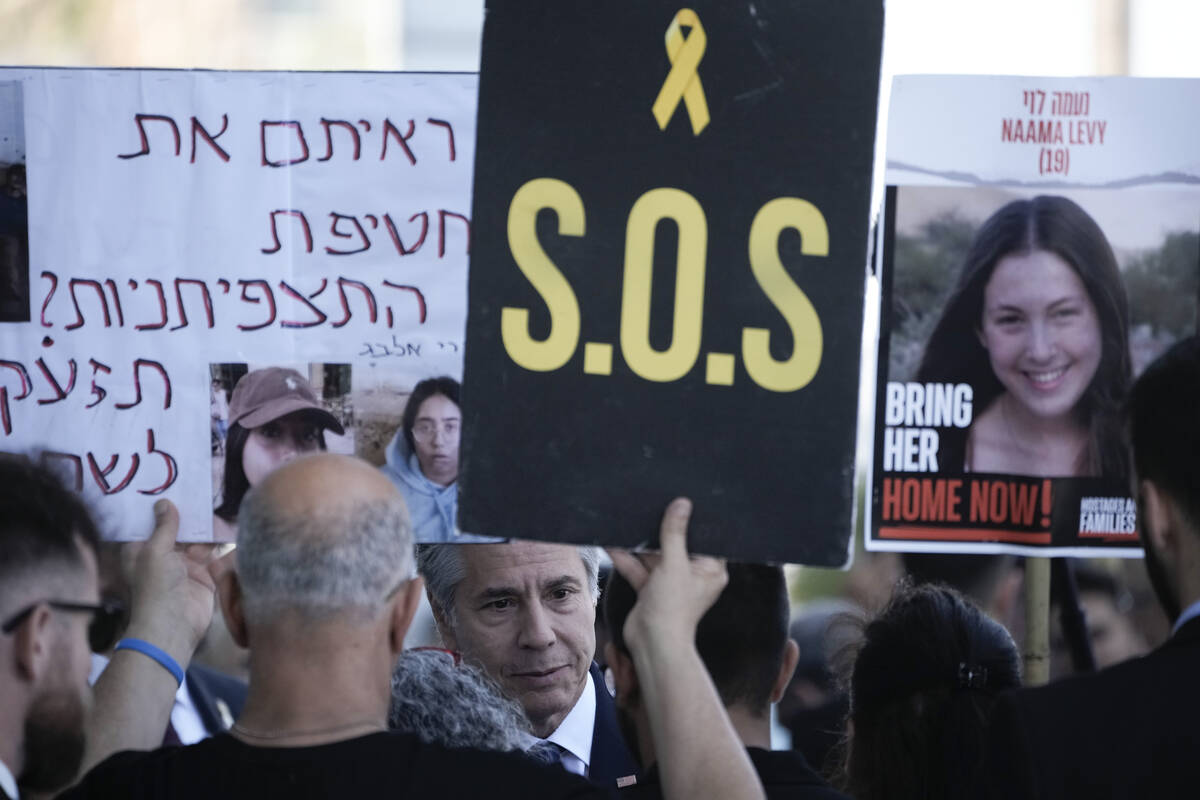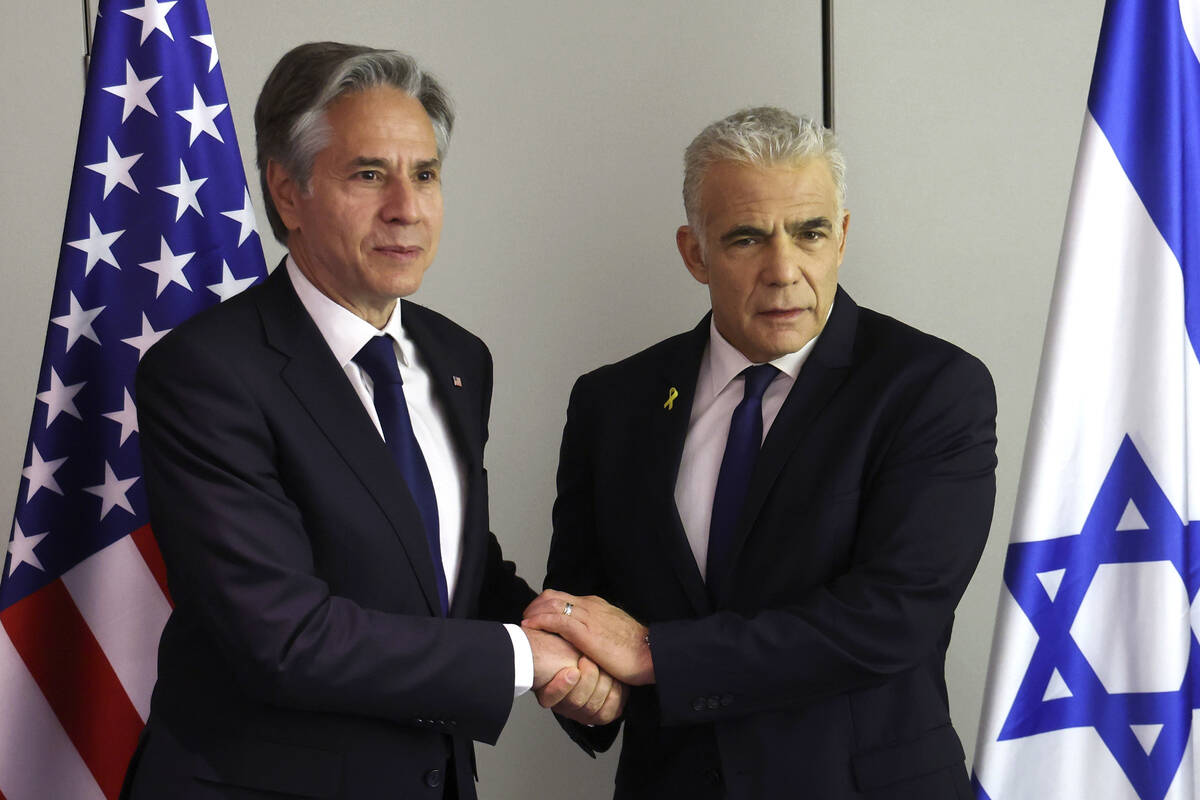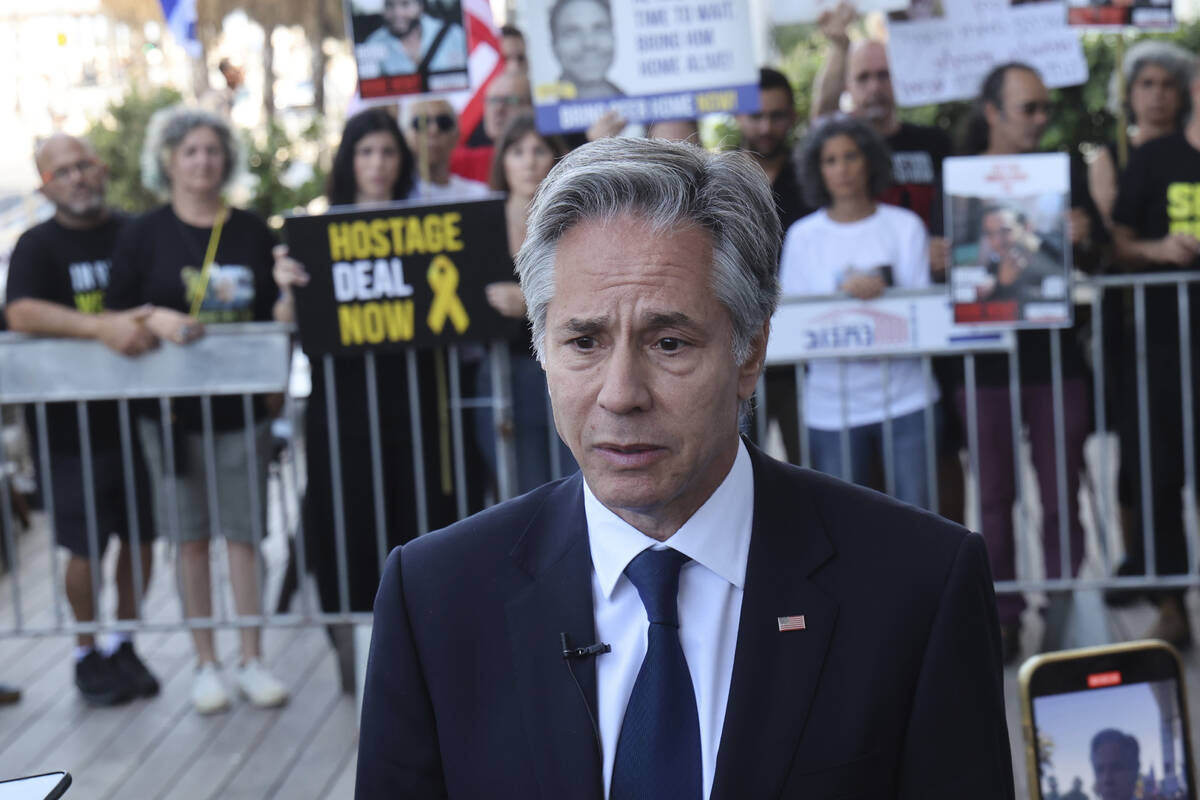Blinken calls on Hamas to accept Gaza cease-fire plan
Secretary of State Antony Blinken said the U.N. Security Council’s vote in favor of the U.S.-backed proposal for a Gaza cease-fire and hostage release made it “as clear as it possibly could be” that the world supports the plan, as he again called on Hamas to accept it.
“Everyone’s vote is in, except for one vote, and that’s Hamas,” Blinken told reporters in Tel Aviv after meeting with Israeli officials during his eighth visit to the region since the Hamas-led terrorist attack on southern Israel on Oct. 7. He said Prime Minister Benjamin Netanyahu had reaffirmed his commitment to the proposal when they met late Monday.
Hamas said Tuesday that it gave Qatari and Egyptian mediators its reply, with some “remarks” on the deal. It appeared the reply was short of an outright acceptance that the United States has been pushing for, but the group said it was ready to keep working to reach an agreement.
The foreign ministries of Qatar and Egypt — who have been key mediators with Hamas in months of talks — confirmed that they had received Hamas’ response and said mediators were studying it.
In a joint statement, Hamas and the smaller Islamic Jihad terrorist group said they were ready to “deal positively to arrive at an agreement” and that their priority is to bring a “complete stop” to the war. A senior Hamas official, Osama Hamdan, told Lebanon’s Al-Mayadeen television that the group had “submitted some remarks on the proposal to the mediators.” He did not give any details.
In a separate development, the U.N. human rights office said Israeli forces and Palestinian terrorists may have committed war crimes during the deadly Israeli raid that rescued four hostages over the weekend. At least 274 Palestinians were killed in the operation, according to Gaza’s the Hamas-run Health Ministry in Gaza, which does not distinguish between fighters and civilians.
Blinken’s latest visit to the region is focused on rallying support for the cease-fire proposal, boosting the entry of humanitarian aid and advancing postwar plans for Gaza’s governance.
He met privately with families of the hostages as well as demonstrators outside a hotel calling for a cease-fire deal, and later traveled on to Jordan. Blinken was also expected to visit Qatar, which along with Egypt has served as a key mediator with Hamas. Blinken was in Cairo on Monday.
The proposal, announced by President Joe Biden last month, calls for a three-phased plan in which Hamas would release the rest of the hostages in exchange for a lasting cease-fire and the withdrawal of Israeli forces from Gaza. The group is still holding around 120 hostages, a third of whom are believed to be dead.
Biden presented it as an Israeli proposal, but Netanyahu has publicly disputed key aspects of it, saying Israel won’t end the war without destroying Hamas and achieving the return of all the hostages.
Hamas supports the broad outline of the agreement but has demanded assurances it will be implemented. The terrorist group embraced a similar proposal last month that was rejected by Israel.
“Efforts are continuing to study and clarify some matters to ensure implementation by the Israeli side,” Hamas spokesman Jihad Taha said Tuesday. Israel “has not given clear approval or commitments to implementation that would lead to ending the aggression,” he said.
On Monday, the U.N. Security Council voted overwhelmingly to approve the proposal, with 14 of the 15 members voting in favor and Russia abstaining. The resolution calls on Israel and Hamas “to fully implement its terms without delay and without condition.”
The war began when Hamas and other terrorists stormed into Israel on Oct. 7, killing some 1,200 people, mostly civilians, and taking around 250 hostage. Over 100 hostages were released during a weeklong cease-fire last year in exchange for Palestinians imprisoned by Israel.
The proposal has raised hopes of ending the 8-month war that has killed over 37,000 Palestinians, according to the Hamas-run Health Ministry in Gaza.
Later Tuesday, Blinken attended a Gaza aid conference in Jordan, where he announced over $400 million in additional aid for Palestinians in Gaza and the wider region, bringing the total U.S. assistance to more than $674 million over the past eight months.
U.N. Secretary-General António Guterres told the gathering that the amount of aid flowing to the United Nations in Gaza for distribution has plummeted by two-thirds since Israel launched an offensive in the territory’s southern city of Rafah in early May.
Guterres called for all border crossings to be opened, saying, “the speed and scale of the carnage and killing in Gaza” is beyond anything he has since he took the helm of the U.N. in 2017.
Biden’s May 31 announcement of the new proposal said it would begin with an initial six-week cease-fire and the release of some hostages in exchange for Palestinian prisoners. Israeli forces would withdraw from populated areas and Palestinian civilians would be allowed to return to their homes.
Phase one also requires the safe distribution of humanitarian assistance “at scale throughout the Gaza Strip,” which Biden said would lead to 600 trucks with aid entering Gaza every day.
In phase two, the resolution says that with the agreement of Israel and Hamas, “a permanent end to hostilities, in exchange for the release of all other hostages still in Gaza, and a full withdrawal of Israeli forces from Gaza” will take place.
Phase three would launch “a major multi-year reconstruction plan for Gaza and the return of the remains of any deceased hostages still in Gaza to their families.”
The conflicting signals from Netanyahu appear to reflect his political dilemma. His coalition allies have rejected the proposal and have threatened to bring down his government if he ends the war without destroying Hamas. A lasting cease-fire and the withdrawal of Israeli forces from Gaza would likely allow Hamas to retain control of the territory and rebuild its military capabilities.
But Netanyahu is also under mounting pressure to accept a deal to bring the hostages back. Thousands of Israelis, including families of the hostages, have demonstrated in favor of the U.S.-backed plan.
The transition from the first to the second phase appears to be a sticking point. Hamas wants assurances that Israel will not resume the war, and Israel wants to ensure that protracted negotiations over the second phase do not prolong the cease-fire indefinitely while leaving hostages in captivity.
Blinken said the proposal would bring an immediate cease-fire and commit the parties to negotiate an enduring one. “The cease-fire that would take place immediately would remain in place, which is manifestly good for for everyone. And then we’ll have to see,” Blinken said.



